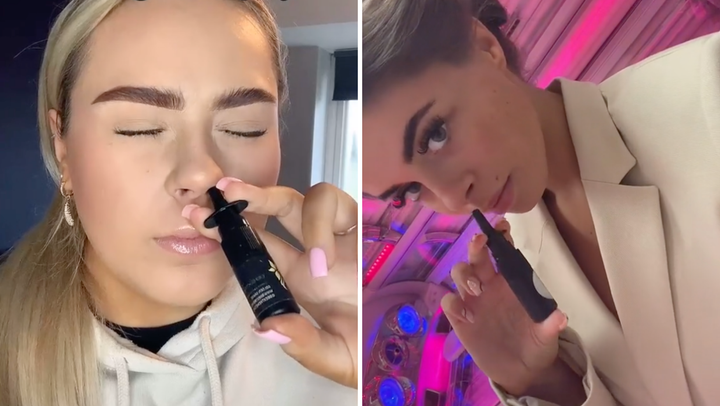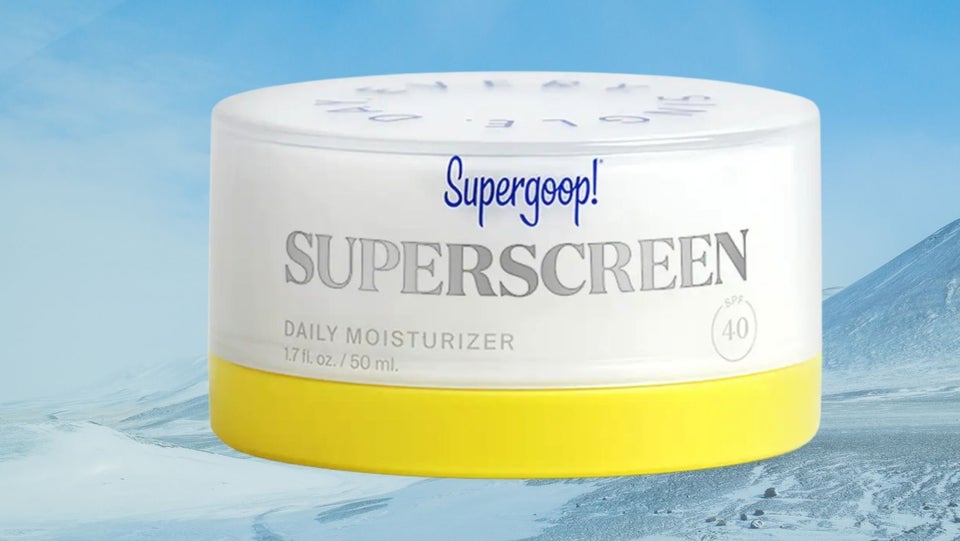
For anyone whose goal is to maintain a year-round glow, winter has kickstarted a laser focus on self-tanning routines. The latest trend related to achieving a faux glow? Tanning nasal sprays — that is, spraying a tanning solution up the nose in order to get a “tan from within” (not just inside your nostrils).
Yes, you read that correctly.
Made popular by TikTok, the trend is garnering attention from beauty buffs and health experts alike — but not necessarily in a positive way. These formulas are made with unregulated substances and have experts questioning their legitimacy and health consequences.
Below, learn everything you need to know about tanning nasal sprays, along with healthier alternatives experts recommend.
What are tanning nasal sprays?
Tanning nasal sprays are tanning solutions housed in bottle form (similar to an allergy spray bottle) and are meant to be sprayed up the nose. They contain an ingredient called melanotan that stimulates your body to produce of melanin, the pigment that determines skin and hair color.
“Melanotan is a man-made chemical similar in substance to the naturally occurring melanocyte-stimulating hormone,” said Merry Thornton, a certified physician assistant, skin care expert and founder of Element Medical Aesthetics. Although TikTok has made melanotan notorious for increasing the tendency to tan, it’s also been studied as a way to stimulate penile erection.
The artificial hormone is typically found illicitly as an injectable, but board-certified dermatologist and AmberNoon founder Erum Ilyas said that tanning sprays are applied inside the nostrils in order to increase absorption in a non-invasive way. “Nasal sprays allow for delivery of the [solution] to the pulmonary system, which increases systemic absorption through the larger surface area provided through the lung,” Ilyas said.
Are tanning nasal sprays safe?
Melanotan is not a regulated substance, which makes it difficult to say how manufacturers are using the ingredient in terms of concentration and interactions with other inactive ingredients, Ilyas said.
When it comes to safety, Thornton said there is not enough data or testing to recommend using tanning nasal sprays. In addition to causing spontaneous erections in males, side effects of melanotan can include nausea, flushing, changes to blood pressure and headaches. “It can also make moles and freckles darker, and at this time, we don’t know if the melanocytes could be over-stimulated, leading to melanoma,” Thornton said. “Using melanotan could lead to misdiagnosis of skin cancer, as well.”
Because the product is administered through the nose, Thornton said this can increase side effects. “Nasal sprays shoot a fine mist into the nasal mucosa, which is rich in vessels and provides a direct route into the bloodstream for medications that can easily cross mucous membranes,” she said. “This is concerning because systemic absorption increases the risk of side effects.”
What’s even more pressing, many manufacturers of tanning nasal sprays instruct the user to increase their UV exposure while using the product, either by the sun or through tanning beds. According to Ilyas, this is done to increase the product’s efficacy through upregulation — that is, increasing the tanning effect internally through the spray and externally via the sun.
This is concerning on a multitude of fronts — not only does UV exposure increase the risk of skin cancer and premature aging, but a product that asks users to obtain UV exposure is “an example of how unregulated the product is,” Ilyas said. And as far as tanning beds are concerned, the American Academy of Dermatology Association states that the risk of melanoma, the most life-threatening form of skin cancer, increases with the use of tanning beds, even more so for women who begin tanning before the age of 35.
There are safer tanning alternatives.
Thankfully, you won’t find melanotan in typical self-tanning lotions and sprays (not nasal sprays). The main ingredient used in most tanning solutions is dihydroxyacetone, or DHA.
Ilyas explained that when DHA interacts with proteins in the skin, melanoidins are created. “These are brown-colored pigments that deposit in the most superficial layer of skin (the stratum corneum) to give the appearance of a tan,” she said. And because DHA is not absorbed into the body beyond the stratum corneum, it’s a safe choice when used topically. Not to mention, self-tanners are available in a variety of shades to suit different skin tones.
One caveat that both Ilyas and Thornton noted is that sunless tanners are not a substitution for SPF — sunblock with at least SPF 30 still needs to be used (and reapplied) if you’ll be spending time in the sun.
